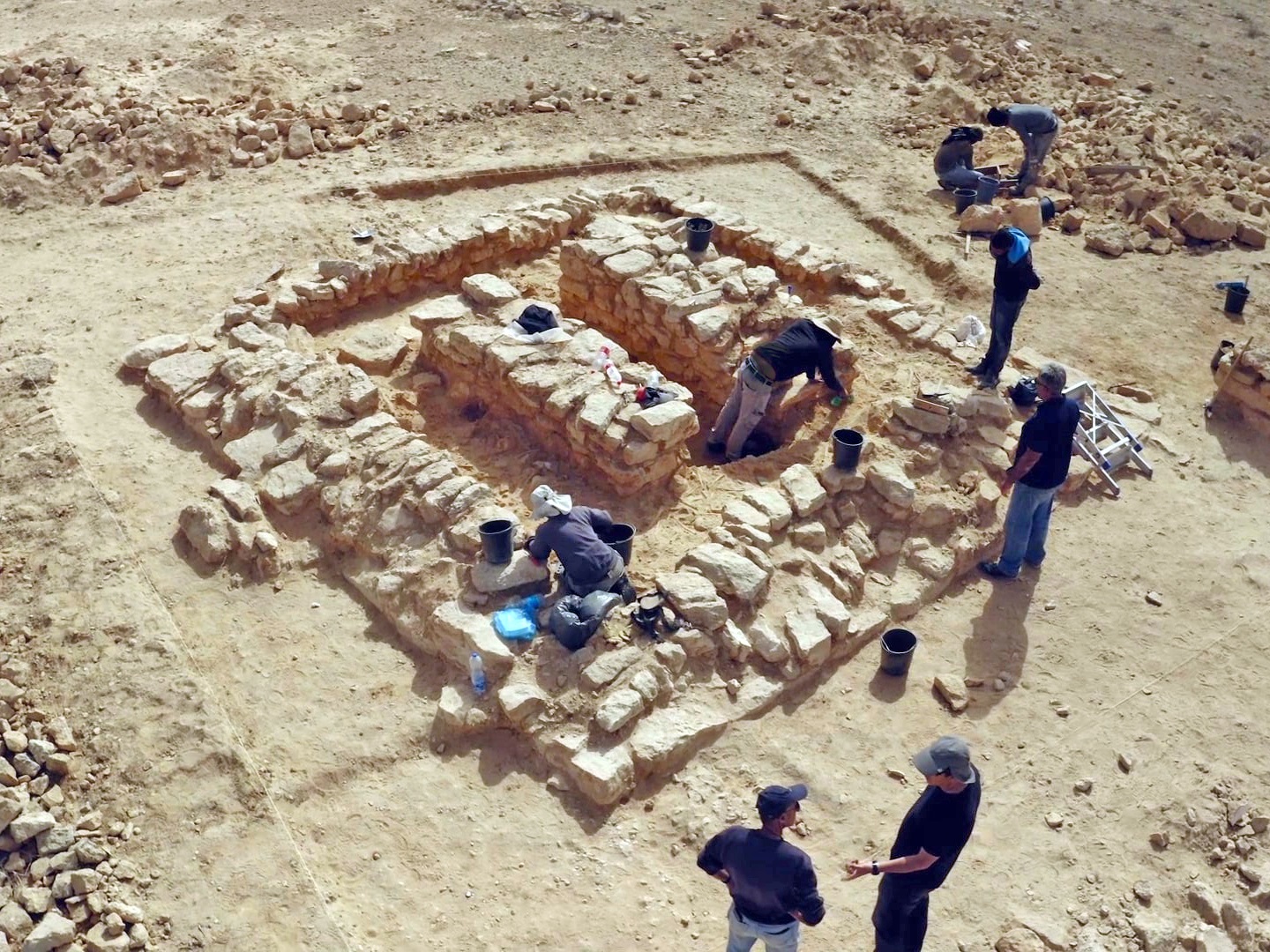Archaeologists from the Israel Antiquities Authority (IAA) have uncovered tombs near Tlalim Junction in the Negev Highlands, revealing trade connections with Yemen, Phoenicia, and Egypt.
The excavation uncovered a wealth of artefacts, including flint arrowheads linked to Yemen and Oman, copper and silver jewellery, alabaster vessels for incense transport, and an amulet of the Egyptian god Bes.
These discoveries suggest the Negev was more than a trade route—it was a centre of cultural and commercial exchange among several ancient civilisations.
Unlike traditional cemeteries generally located near population centres, the tombs are isolated from any known settlements or fortresses. Researchers suggest two possibilities: the site may have been a long-term burial ground for passing caravans or a mass grave for traders who perished in an attack.
According to historical accounts, these caravans transported high-valued commodities such as frankincense and myrrh, and possibly trafficked women from Gaza, Egypt, Greece, Moab, and Edom.
“The unique concentration of flint artefacts uncovered at the site are unparalleled in Israel, and the only source that we know of is Yemen and Oman”, says Dr. Jacob Vardi, An expert on flint tools at the Israel Antiquities Authority.
“We also found traces of red ochre on some of the artefacts – a substance that was used in ancient cultures to symbolise blood and for other decorative purposes. The presence of ochre on these arrowheads may indicate their religious or cultic significance as having special value,” added Dr. Vardi.
The discovery will be presented to the public for the first time in a new lecture series – “Archaeological Mysteries” conducted by experts from the Israel Antiquities Authority in the Jay and Jeanie Schottenstein National Campus for the Archaeology of Israel.
Header Image Credit : IAA
Sources : Israel Antiquities Authority







